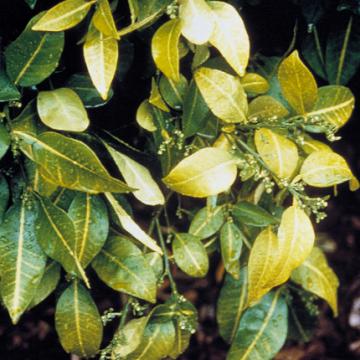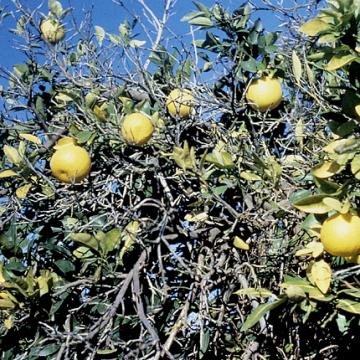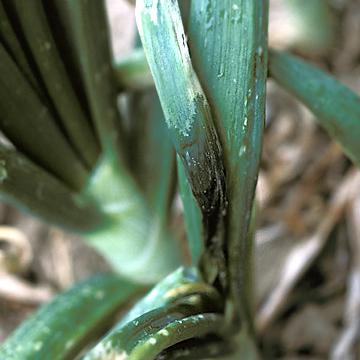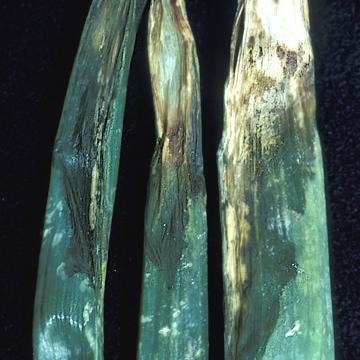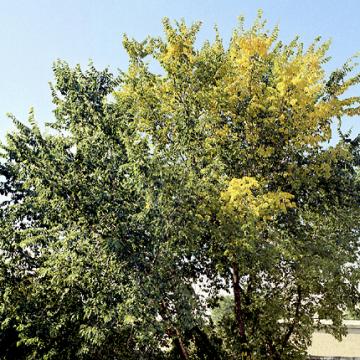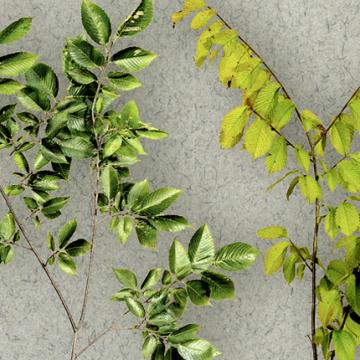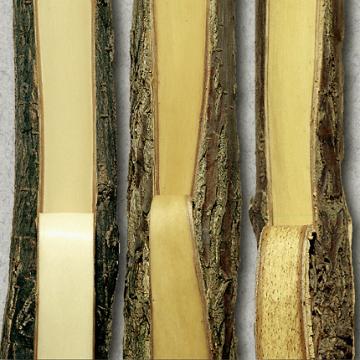DISEASE: Australian citrus dieback
HOST: Citrus (Grapefruit)
Leaves with mottled chlorosis.

Australian citrus dieback | Citrus (Grapefruit)
DISEASE: Australian citrus dieback
HOST: Citrus (Grapefruit) (Citrus paradisi)
PATHOGEN: 'Candidatus Phytoplasma' sp.
PATHOGEN SYNONYM: Phytoplasma (undefined)
SOURCE: P. Broadbent
DISEASE: Australian citrus dieback
HOST: Citrus (Grapefruit)
Late stage of disease. Note yellowing of leaf veins and entire leaves.

Australian citrus dieback | Citrus (Grapefruit)
DISEASE: Australian citrus dieback
HOST: Citrus (Grapefruit) (Citrus paradisi)
PATHOGEN: 'Candidatus Phytoplasma' sp.
PATHOGEN SYNONYM: Phytoplasma (undefined)
SOURCE: P. Broadbent
DISEASE: Australian citrus dieback
HOST: Citrus (Lime)
Severe decline, a late stage of disease. The disease spreads slowly in mature trees, progressing faster in young trees.

Australian citrus dieback | Citrus (Lime)
DISEASE: Australian citrus dieback
HOST: Citrus (Lime) (Citrus sp.)
PATHOGEN: 'Candidatus Phytoplasma australiense'
PATHOGEN SYNONYM: Phytoplasma Stolbur group
SOURCE: P. Broadbent
DISEASE: Bacterial flower stalk and leaf necrosis
HOST: Onion
Dark, rotted areas of stalk and leaves caused by systemic invasion of the pathogen.
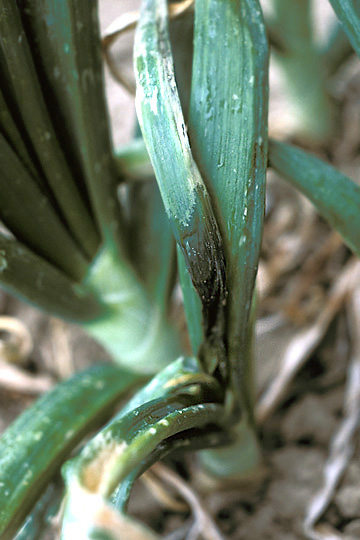
Bacterial flower stalk and leaf necrosis | Onion
DISEASE: Bacterial flower stalk and leaf necrosis
HOST: Onion (Allium cepa)
PATHOGEN: Pseudomonas marginalis pv. marginalis
SOURCE: S. Mohan
DISEASE: Bacterial flower stalk and leaf necrosis
HOST: Onion
Gray-brown rot of onion after inoculation. Disease starts as small, water-soaked lesions that later develop into slimy, gray-brown rot. The disease progresses downward from the stalk and may rot the entire bulb.
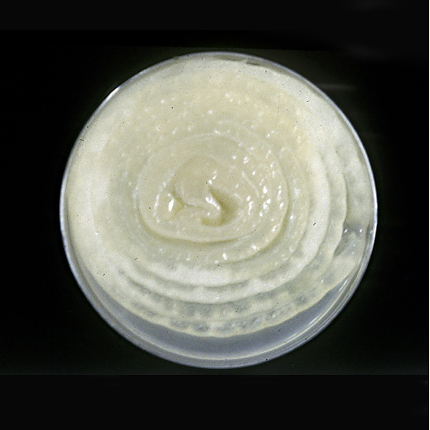
Bacterial flower stalk and leaf necrosis | Onion
DISEASE: Bacterial flower stalk and leaf necrosis
HOST: Onion (Allium cepa)
PATHOGEN: Pseudomonas marginalis pv. marginalis
SOURCE: R. Gitaitis
DISEASE: Bacterial flower stalk and leaf necrosis
HOST: Onion
Leaves with necrosis and rot. The common name for this disease is the same as those used for two other diseases. Also, another common name for this disease is bacterial soft rot.
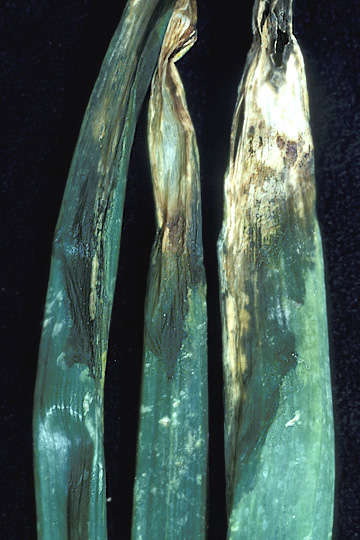
Bacterial flower stalk and leaf necrosis | Onion
DISEASE: Bacterial flower stalk and leaf necrosis
HOST: Onion (Allium cepa)
PATHOGEN: Pseudomonas marginalis pv. marginalis
SOURCE: S. Mohan
DISEASE: Elm yellows
HOST: Elm
Symptoms of elm yellows occasionally appear on one branch before others, but more often they involve the entire crown.

Elm yellows | Elm
DISEASE: Elm yellows
HOST: Elm (Ulmus americana)
PATHOGEN: 'Candidatus Phytoplasma ulmi'
PATHOGEN SYNONYM: Phytoplasma Elm yellows group
SOURCE: W. Sinclair
DISEASE: Elm yellows
HOST: Elm
Diseased twig (right) with epinasty, chlorosis, and yellowing of leaves. Sometimes both yellow and green leaves occur on same branch. Healthy branch (left).

Elm yellows | Elm
DISEASE: Elm yellows
HOST: Elm (Ulmus americana)
PATHOGEN: 'Candidatus Phytoplasma ulmi'
PATHOGEN SYNONYM: Phytoplasma Elm yellows group
SOURCE: W. Sinclair
DISEASE: Elm yellows
HOST: Elm
Branches with butterscotch discoloration (center) and necrotic flecks in phloem and vascular cambium (right). Healthy branch (left). Sudden wilt and browning is common with small trees.
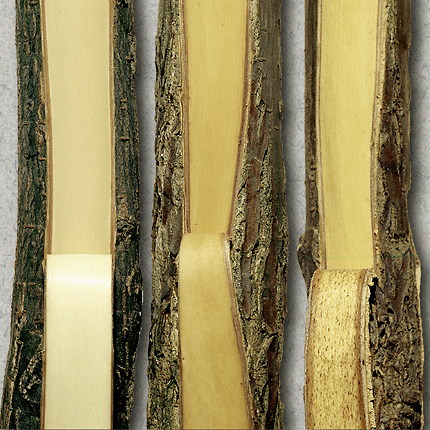
Elm yellows | Elm
DISEASE: Elm yellows
HOST: Elm (Ulmus americana)
PATHOGEN: 'Candidatus Phytoplasma ulmi'
PATHOGEN SYNONYM: Phytoplasma Elm yellows group
SOURCE: W. Sinclair



